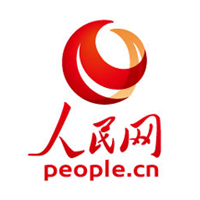In the Salmon Base in Kalasu Township, Nilke County, Ili Kazak Autonomous Prefecture, Xinjiang, a fresh fish can be processed, packaged, transported and delivered to consumers' tables within 24 hours.
Recently, the "seafood" in Xinjiang has become popular, which makes many people have questions.
Why Xinjiang can raise salmon
On September 8, the reporter learned in an interview that Nilke County has a unique ecological environment and a high-quality farming and pastoral environment, and has two basic elements of salmon breeding, namely, high-quality water source and appropriate temperature.
"Nilke County is located in the upper reaches of the Ili River. At present, three large and medium-sized reservoirs have been formed. The water temperature is kept at 8 ℃ to 13 ℃ all the year round, the water quality is clear and flows slowly, which is very suitable for the growth, breeding and large-scale breeding of cold water fish." The relevant person in charge of the Agriculture and Rural Affairs Department of the Xinjiang Uygur Autonomous Region introduced that the Ili River basin has a history of rainbow trout breeding for more than 40 years, Local farming experience and natural ecological environment provide conditions for high-quality salmon farming.
"Salmon is the trade name of salmonid fish, and the salmon raised by Ili means' triploid rainbow trout 'in particular." The person in charge introduced that currently the salmon raised are mainly divided into four varieties: Atlantic salmon, rainbow trout, silver trout and king trout. The salmon raised in Nilek County is triploid rainbow trout, which has a long history of cultivation internationally. It is a sterile variety induced from fish eggs by physical pressure technology, which ensures that introduced/escaped individuals cannot reproduce, and has both economic value and environmental significance. Rainbow trout is a cold water migratory fish, which can live in both sea water and fresh water.
The fresh fish from Nilke Glacier live water is delicious and sweet, which not only makes Xinjiang people far away from the sea eat fresh salmon, but also leaps out of Tianshan Mountain to the whole country.
At present, salmon products produced in Nilek County have been put on the shelves of major supermarkets and e-commerce sales platforms, and exported to Russia, Malaysia and other countries.
"The company can breed 8 million salmon seedlings every year, and the annual production capacity of high-quality salmon is 12000 tons. It has built a mature whole industry chain integrating scientific research and development, seedling breeding, intelligent breeding, deep processing, and sales." Wang Yuan, assistant to the chairman of Xinjiang Tianyun Organic Agriculture Co., Ltd. and deputy general manager of Xinjiang Trout Gui Fresh Food Technology Co., Ltd., said.
Deng Kangchu, director of the Fishery Supervision Department of the Agriculture and Rural Affairs Department of the Xinjiang Uygur Autonomous Region, introduced that the beaches in the waters suitable for fishing in Xinjiang cover an area of more than 46 million mu, with good water quality and the resource endowment of high-quality fishery development.
Can freshwater cultured salmon be eaten raw
It is understood that compared with imported products, farmed salmon in Xinjiang is not only more competitive in price, but also has higher freshness and nutritional value.
Wang Yuan introduced that the company's fishery equipment engineering technology center independently developed a semi closed circulating water fish farming system, which solved three major problems commonly encountered in the process of cold water fish farming: first, the appetite of fish declined when the water temperature was high in summer; Second, the low dissolved oxygen content in water affects the normal growth and development of fish; Third, the surface water is frozen in winter and cannot be used for bait and fishing.
Wang Yuan told the reporter that after using the semi closed circulating water fish farming system, the fish growth cycle was shortened from 36 months to 26 months, the survival rate was increased by 3%, the bait conversion rate was increased by 10%, and the comprehensive profit rate was increased by 10%, and the risk of extreme weather conditions on fishery production was effectively resolved.
The discussion on whether freshwater cultured salmon can be eaten raw has been ongoing. Experts from the Department of Agriculture and Rural Affairs of the Xinjiang Uygur Autonomous Region explained that this was actually a misunderstanding of freshwater fish and marine fish.
"There are indeed many parasites in fresh water that can directly affect the human body, but they do not necessarily infect the human body by infecting fish. On the other hand, there are also many parasites and pathogenic bacteria in seawater fish that can infect the human body," said the expert, "Whether a fish has parasites and can feed raw depends not on whether it grows in seawater or fresh water, but on whether its growth process is safe and controllable."
According to the relevant person in charge of Xinjiang Tianyun Organic Agriculture Co., Ltd., the company has set up an automated aseptic salmon processing line with a variety of processing and packaging methods. HACCP certification and BAP certification are available from production to processing to ensure food safety.
"The huge development potential of Xinjiang's fishery is gradually being released." Deng Kangchu said that at present, aquaculture has become a rich industry in Xinjiang's main fishery production areas, and has contributed an important force to rural revitalization and promoting the sustainable and stable income increase of farmers. In 2022, the total fishery output value of the area will reach 4.2 billion yuan, an increase of 921 million yuan over 2019. The per capita net income of fishermen in this area is 19960 yuan, 3410 yuan higher than the per capita disposable income of rural residents.
(Editor in charge: Wang Zhen, Chen Jian)
 Concerned public account: People's Daily Finance
Concerned public account: People's Daily Finance
Share to let more people see






































